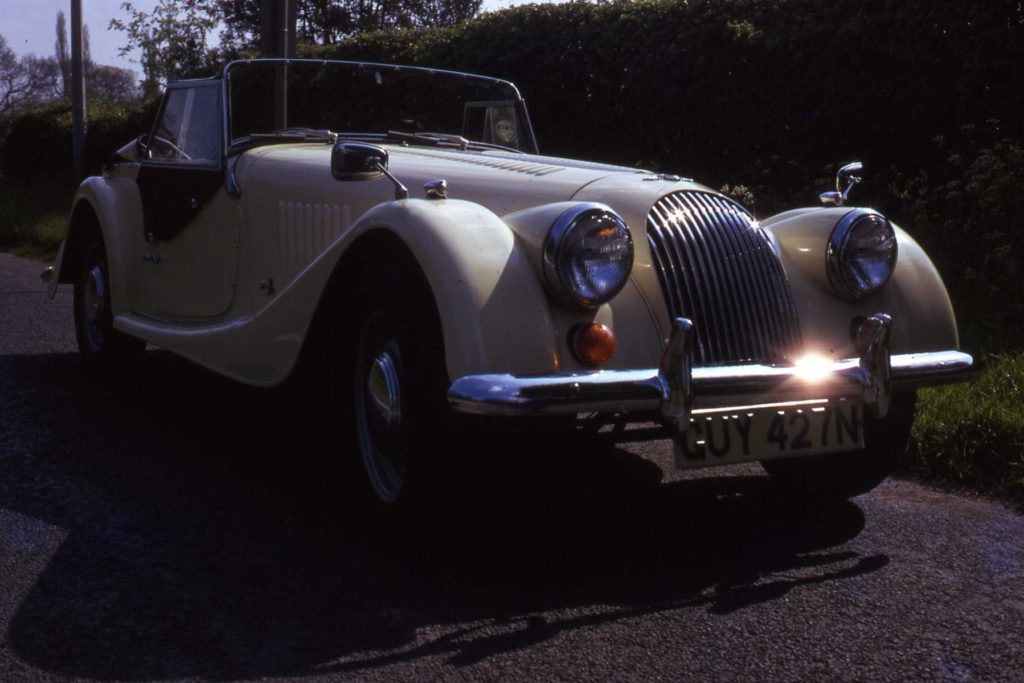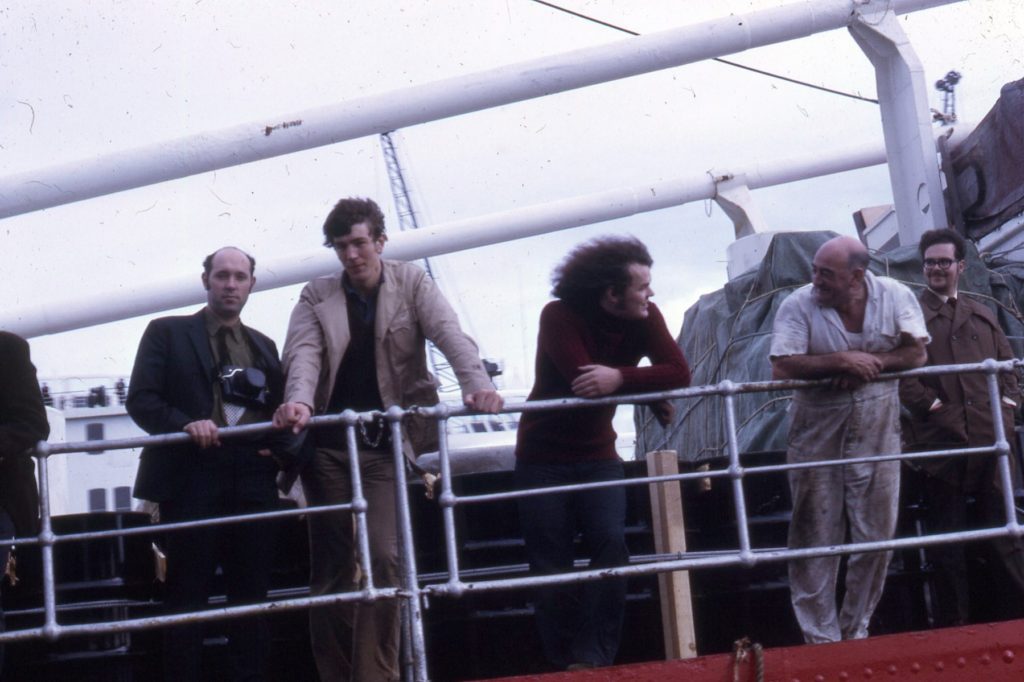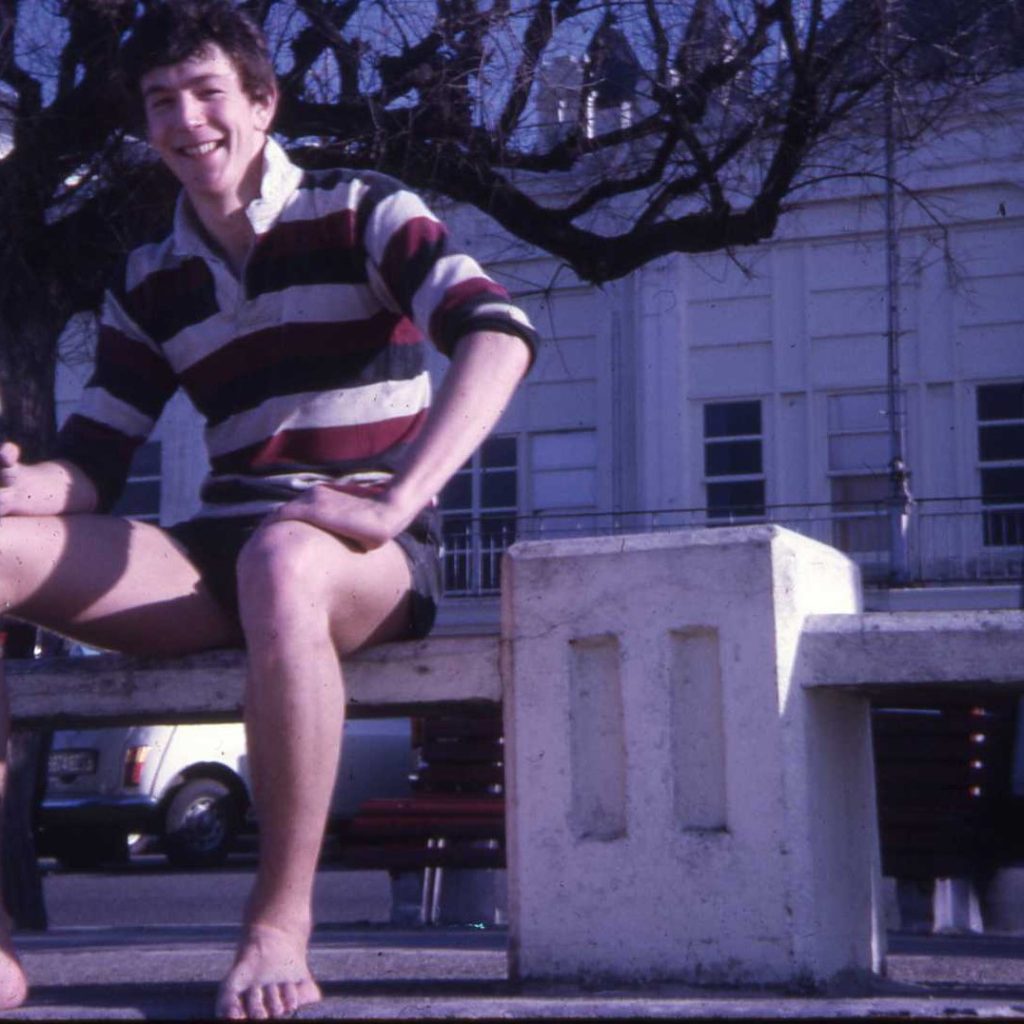Why I became a Fid (continued)
After the divorce I lived with my dad in our Thorne council house (a mining town in South Yorkshire) for about a year. Every month I travelled to Hull to see my mother, either on the train or on my bike. Then things changed again. When my father and mother were going through their crisis, dad developed a relationship with someone else while teacher training as a mature student. His new partner was only a few years older than me and eventually became my stepmother.
Sadly as with many step parent situations where children already exist in the previous relationship, we never really got on and still to this day rarely speak. The new marriage again suffered from arguments but it seemed like they both embraced this, enough to have two children and stay together until my dad finally passed away many years later. I found the frequent fighting quite stressful and couldn’t wait to leave home permanently. It did spur me on to greater things and made me even more determined.One good thing about remaining with my dad was that I could stay at the local grammar school and continue with my studies through GCE ‘O’ levels and then ‘A’ levels. It also meant that I could carry on with the Duke of Edinburgh’s Award scheme, again something that would stand me in good stead. The award covered a variety of achievements from sport, first aid, personal interests to public service and the thing I loved the most, the expeditions. These generally involved trekking and camping in the wilds of the Derbyshire Peak District.
In spite of the family upheaval I still did really well at school and then had the opportunity to study for a joint honours degree in geology and geography at Bristol University. I chose Bristol because it got me well away from Thorne which by then was becoming quite a depressed area as the coal industry gradually shut down. After almost getting thrown out of university at the end of year one, I buckled down and did really well both academically and in sport. More importantly, I also thoroughly enjoyed myself. It was during my final year there as I was walking home that the idea of going south really got to me. Earlier I had been looking through brochures in the careers department and came across something about the British Antarctic Survey (BAS). At the time I had a PhD research post at Ottawa University lined up and the possibility of a couple of mining jobs in South Africa so I didn’t give BAS much thought. However, there was something about the Antarctic idea and as I walked, I found myself saying out loud, “I work for the British Antarctic Survey! “ (fortunately there was no one around). I liked the sound of that and the rest is history. I applied, got an interview down in London where the infamous panel of Bill Sloman and co. grilled me more on my Duke of Edinburgh experience, than the geology degree. I didn’t set out to be a professional geologist when I went to university. I just liked studying the subject along with geography and the field work was great fun (especially when the geographers visited Lisdoonvarna in Co. Clare, Ireland during the annual beer festival; geographers knew how to party; geologists at Bristol were always a bit more serious for some reason and so socially I had less to do with them). However, the thought that with BAS I could get a PhD in geology and be paid a salary did have its appeal. That said I was definitely more interested in the exploration and especially the idea of working with dogs. Anyway, I got the job as a geologist although I wasn’t sure at the time where this would be based. Some of my university friends thought I had got a job in a brewery (BASS!)
I remember at some point meeting Edwin Mickleburgh (Mick as he was known by FIDS). He made Antarctic films for the BBC and ITV having spent time as a met man between 1968 and 1971 at Signy and Adelaide. At the time, I met him at his parent’s house in Bristol. They had a piano shop in the city which I think still exists today. Mick showed me some fantastic pictures of life in Antarctica as you would expect from a photographer and film maker. That did it for me I was hooked. Interestingly when I phoned my dad to tell him I was going to work in Antarctica for two years he didn’t want me to go. I guess with his parent’s hat on he thought it too dangerous and was being protective. Well, in true form, I ignored his advice, although to some extent he was right about the danger. What he could never have anticipated though was the team work, experience, resourcefulness and application of FIDS in a crisis.
The summer after my graduation was mostly spent at Birmingham University where Dr Ray Adie ran the BAS Earth Sciences section. There I met a great bunch of FIDS who had all been south. There seemed to be quite a lot of them from various bases and years. These are the ones I can remember: Brian (Tal) Taylor (Fossil Bluff 1961-62; geo.), Geoff Renner (Stonington 1964; geophys.), Mike Thomson (Adelaide 1964; Stonington 1965; geo.), Dave Brook (Halley Bay 1966-67; geo.), Lew Willey (Stonington 1967-68; geo.), Mike Skidmore (Halley Bay 1967-68; geo), Graham Smith (Fossil Bluff 1968; geo.), Pete Clarkson (Halley Bay 1968-69; geo), Ian Flavell (Flay) Smith (Stonington 1968-69; geophys.), Pete Rowe (Signy 1968, Stonington 1969; geo.), Mike Bell (Fossil Bluff 1969; Adelaide 1970; geo), Mike Elliott (Adelaide 1968; Fossil Bluff 1969; geo), Ali Skinner (Stonington 1969-70; geo.). Phil Stone (South Georgia summer geologist) may also have been around at that time. Apologies if I have forgotten anyone. I particularly remember Flay who put me up in his flat for a few nights initially until I found my feet in a Selly Park house not far from work. His Lotus 7 was particularly cool. Needless to say, I was easily impressed then, especially if cars were involved! It was shortly after that I put my name down on the Morgan Motor Company waiting list. At the time the list was so long that the car would not be built until I returned from Antarctica which suited me just fine. This was the first of two new custom made Morgans that I have owned.

My BAS induction involved the statutory FIDs grip shows together with various alcohol fuelled evenings. I gradually realised what lay ahead and couldn’t wait. Two other geologists were recruited along with me that year but for different reasons neither saw their work through to the end. Roger Brandon Cruise BSc Hons Geol. as it said on his business card, spent some time on South Georgia but left BAS under a cloud and John (Rock) Hudson sadly had to be medically evacuated from the field in the first year at Stonington – something in which I was directly involved. Neil McNaughton was the new geophysicist but I can’t remember seeing him. One of the memorable activities was learning how to plane table on the Lickey Hill Golf Course. Tal was our instructor, I think. Who would have thought back then I would be the author of my own Stonington field guide to plane tabling (unofficial base report never distributed which is just as well having read it recently; it seemed so clear when I wrote it!).
I can’t remember when I was told my base would be Stonington but I was very pleased and relieved when it was confirmed. I think it may have been at the time of the September Cambridge Conference when we were all briefed prior to heading south. It was a nice 21st birthday present which also coincided with the conference. At that time I still didn’t know what rocks I would be mapping. I was particularly hoping it would be soft rocks rather than hard ones. Geologists will know they are as different as chalk and cheese. In those days Dr Adie believed that telling you too much would lead to preconceived ideas. At the end of the summer, on 21st October 1971 we travelled from Birmingham to Southampton with Dr Adie who talked constantly about the various celebrated geologists he knew (Alexander du Toit, the South African geologist for one); nothing was said about our orders. However, to be fair, he did buy us breakfast. My instructions in a plain brown envelope were given to me personally by him as I stepped on to the waiting John Biscoe at Southampton Docks.

At the time rocks were the last thing on my mind as I quickly latched on to my new Stonington buddies and we headed off to the Dolphin Hotel for lunch and several beers. I remember Mick Pawley being there as he was to be the new incoming Stonington base commander. We all had a great time but unfortunately I drank too much, ending up late back to the ship. I forgot my mother was coming to see me off. Finding no sign of her son, she introduced herself to the captain and so was well looked after having been invited for lunch in the Biscoe’s state room. I think she also must have talked to some of the old Birmingham FIDs who had also come down to see us off. She is now (2020) 91 and still has a letter from Ali Skinner which contains words of comfort and reassurance about what lay ahead for me.
Apart from the Bristol experience, at this point in my life I had rarely been outside of Yorkshire. I went to London 3 times for job interviews and the only country I had visited across water was France when the university rugby team toured there and Ireland for our memorable geography field trip.

So, the idea of travelling 10,000 miles or so to Antarctica was a big step. I think the lunchtime session helped ease the blow.
Once we set sail and I had sobered up a bit I opened the brown envelope (no going back now!).The instructions said I would be mapping hard rocks on the east coast of Palmer Land, exactly the opposite of what I had hoped. So, from that point onwards, with the help of John Hudson (who had a good awareness of hard rocks) I spent a lot of time expanding my knowledge. So, there were certainly no preconceived ideas in my head; in fact there were none at all! That said, I obviously did a good enough job in the end because I had 2 very successful years at Stonington, completed all the mapping assignments, published the required BAS Scientific Report and Bulletin papers – and earned myself a PhD as a bonus. All that in the age of the typewriter, carbon copying and Snowpake! Think I was one of the first of the new breed managing to get the work finished within 2 years or so of returning to the UK. BAS with their shrinking budget were just starting to clamp down on contract extensions so the luxury of taking your time was becoming a thing of the past. There were no extensions for me although Ray Adie did allow me to stay behind for a few extra months in Birmingham when earth sciences moved to Cambridge. The deal was I produced an extra paper on the Seward Mountains. Getting things done to time was something that would serve me well. Most important of all though was that I had developed that independence and confidence that I had noticed in many of the experienced FIDs I met back in 1971. In the words of my auntie Margaret in 1974, “He left as a boy and came back a man”. Not sure about the boy bit but it certainly felt different; maybe it was the facial hair! So, thank you BAS and thank you to all my Antarctic friends with whom it was a privilege to work. After all this time, for me, the best bit will always be the travel, exploration, the dogs – and especially the FIDS some of whom have become lifelong friends.
Dave Singleton Geologist Stonington Base E 1972 – 73
